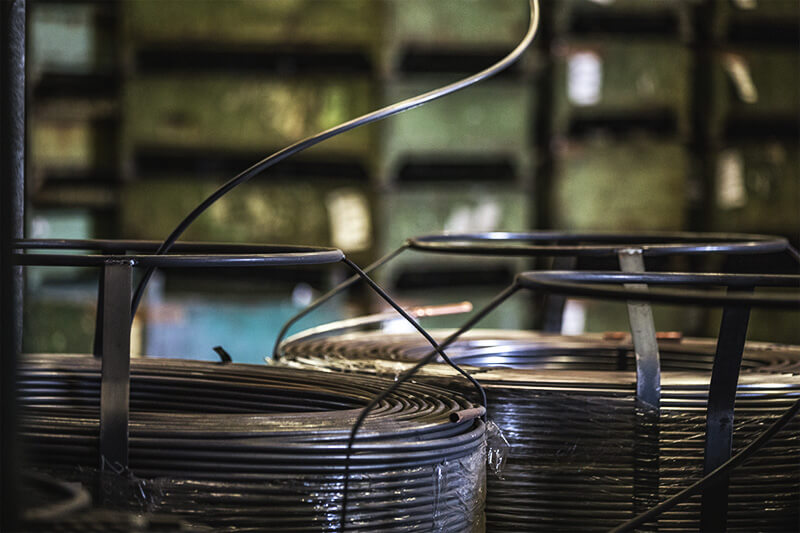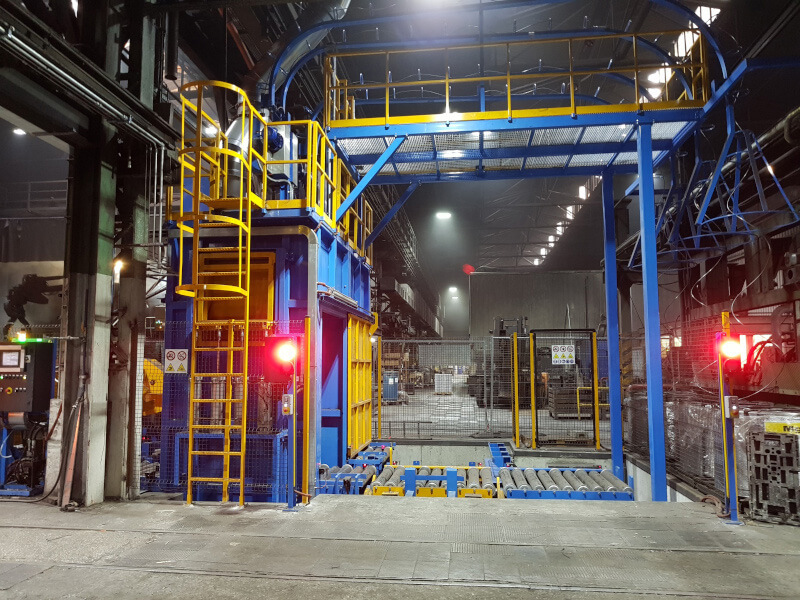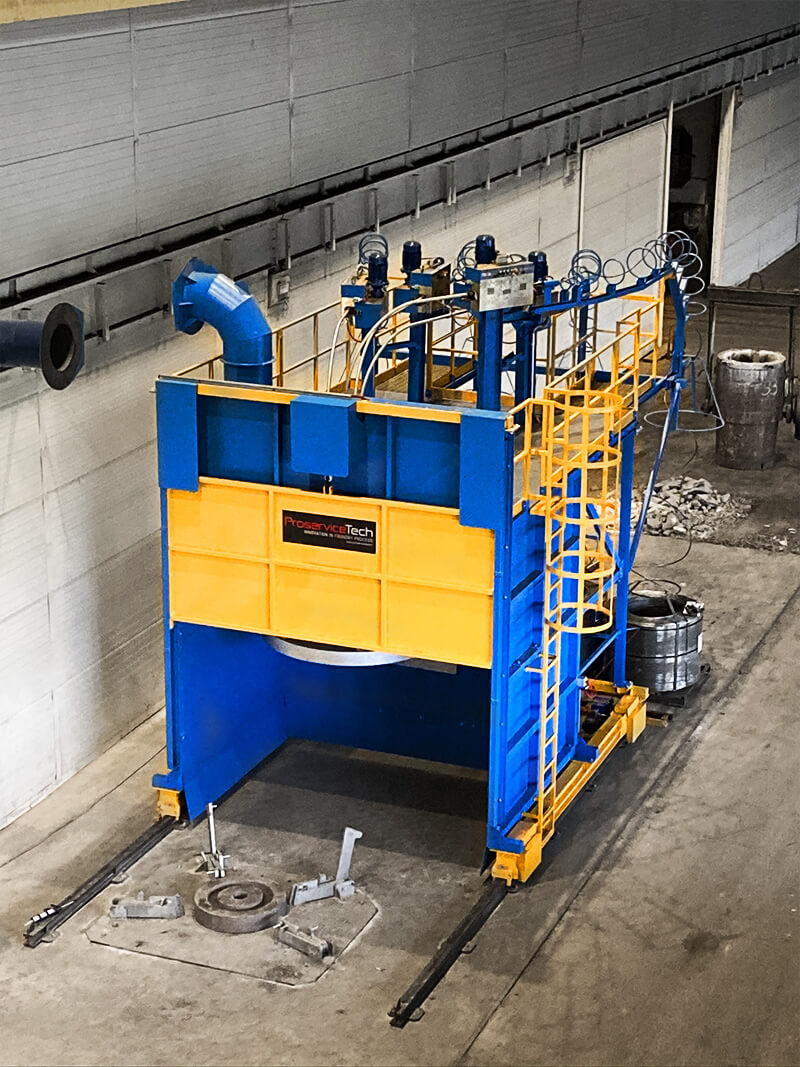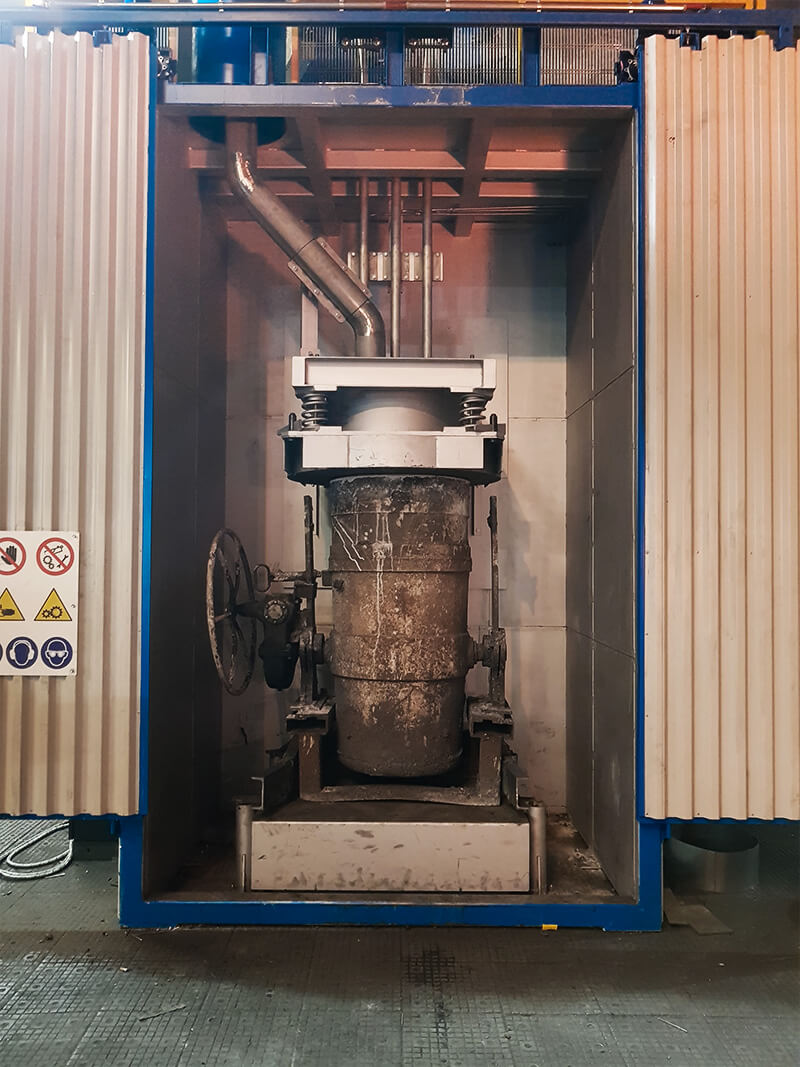
Wire
Nodularisation treatment is always a tricky phase in the cast iron production process: molten metal weight, temperature, chemistry, physical behaviour of the iron… everything contributes to modify the yield of the treatment. The Cored Wire Injection (CWI) process is well known to have many advantages compared to traditional treatment methods like sandwich, tundish or in-mould.
Benefits and Features
- Nodularization Treatment automatization
- Lower material amount inside the ladle
- Fool proof system
- No limits on ladle capacity
TREATMENT AUTOMATIZATION
The main goal of Cored Wire treatment is to make the magnesium treatment a completely automated phase. Proservice ITACA Wire is designed, engineered and programmed following this principle.
The system makes a new calculation according to the new data received from external sources like spectrometer, load cells and dip probe for molten iron temperature. This calculus is made in function of the final iron inside the pouring device (if still present) and it considers also the eventual variation of the moulding line absorption, with the yield variation linked to the different metallostatic pressure due to the lower or higher amount of iron inside the treatment ladle.
A NEW CORRECTIVE PHASE
Releasing the nodularisation treatment from tapping operation, the foundry has the possibility to create a new corrective phase.
Now, it is possible to add corrective materials inside the ladle giving them the time to completely melt and homogenise in the total volume of iron to be treated (think about graphite, SiC, preconditioning, inoculant).
Additionally, the CWI treatment is not only related to nodularisation, but also to preconditioning, inoculation and desulphuring steps.

LESS ADDITION, LESS PROBLEM
An important benefit of the CWI is linked to the amount of material to be added inside the ladle for the treatment. If we consider a standard sandwich treatment, using 6% Mg bulk material, the addition to be made is around 1.1% (compared to iron weight) plus approximately 1% of cover (can be steel or FeSi). In the best case, the operator has to add around 2% of corrective material. This means, for 1 ton ladle, the addition will be around 20 kg.
The CWI process reduces drastically the amount of this addition. In the most common case, using a 13 mm cored wire (400 g/m globally) the addition of an optimized process is around 20 m/ton, with a global weight of just 8 Kg. We can resume the benefits, only considering the amount of the addition, in three points:
- Less amount of slag;
- Lower loss of temperature of the iron during the treatment;
No problem related to material distribution on the bottom of the ladle (if the cover is not placed correctly, the treatment has different reaction with different results).
ENVIRONMENTALLY FRIENDLY AND SAFETY
The magnesium vapour is a very injurious agent for health and environment.
ITACA Wire treatment stations are designed to be closed reaction sites (ITACA Wire is provided with safety doors) and are ready to be connected to fume extraction systems, avoiding any iron sprues during the treatment and exhaust smoke inside the foundry.
SIMPLIER STAFF
The passage from a traditional treatment process to CWI involves not only the station but even the ladle.
Its geometry can be simplified a lot, especially in the bottom part, removing the pocket for the treatment material.
The benefit is double: less maintenance during the usage due to a lower amount of slag and less time and costs for refractory lining. Check out our ladle for molten metal handling and treatment!
PAYBACK FACTOR
Usually, one of the benefits used to promote the usage of CWI instead of the sandwich or tundish treatment is the payback period. It is true, but only if the supplier is expert both in making the machine and in the metallurgy ruling this process. Proservice guides and assists the customer through the passage from traditional treatment processes (or old CWI machine) to ITACA Wire, ensuring no rejection during this period.
Beware of companies selling only equipment!

NOT ALL CWI STATIONS ARE THE SAME
Proservice made many steps forward compared to conventional CWI stations.
The higher redundancy grade allows to keep the treatment always completely under control, ensuring the best quality because it considers not only the chemical balance, but also the physical parameters of the iron when it is connected with ITACA X. The feedback from the pouring lines allows the foundry to verify if the treated iron is in compliance with the quality standards (in terms of nucleation status, compactness of the matrix and tendency to form carbides) and to modify the treatment for the next ladle, if required.
All Proservice treatment stations are specifically designed and engineered for the customer, according to foundry process, layout and cycle time. The station can be designed for single ladle use or multiple ladle with different capacity and geometry without any problem.

SPEED COMPENSATION
In Cored Wire process, the speed calculation is made based on iron quantity, iron temperature and ladle geometry.
An absolute innovation that characterizes Proservice ITACA Wire is the compensation of injection speed, during the treatment itself, to prevent wrong treatments or discrepancies toward the target. Through the sensors installed in the feeder, the system checks the injection speed every 1/10”, recalculates the process yield and makes the appropriate adjustment on the calculation, if necessary, modifying in real time the actual process.
FOOL PROOF SYSTEM
Furthermore to all the features described, the system is equipped with high redundancy controls:
- Cored Wire Breakage – in case the cored wire station detects a failure on the wire, it alerts immediately the operators to stop the process or, if multiple feeders are installed, the remaining length is passed to the second feeder;
- Sealing between ladle and lid – the lid is designed following the geometry of the ladle preventing iron sprues during wire treatment;
- Compensation for ladle refractory consumption, by inserting a function on the feeder;
- In case of Communication failure with other systems, ITACA Wire will wait for a manual input, otherwise it will perform the default amount of wire;
- Variable Speed – Taking into account the variation of the iron temperature and of the iron amount, ITACA Wire adjusts not only the quantity of wire to be injected, but also the injection speed to keep the yield as higher as possible;
- Optimized Fume Extraction system – through the optimization of the suction system opening and closing phase, it is possible to improve the yield of the process, thereby minimizing the fumes emitted from the ladle.
FULLY SUPERVISED SOLUTION
In evaluating the delicate step of the transition between sandwich process to cored wire, it is very important to consult with experts of the foundry process, since the solution is very often not simple and may involve different stages of the process.
Unexpected surprises are not acceptable.
Utilizing this method, it will be possible to achieve a payback period of one year or less, based solely on the reduced consumption of treatment material. Considering, then, the improved iron quality, the payback period can be even shorter.
Check out what our customers tell about us!

